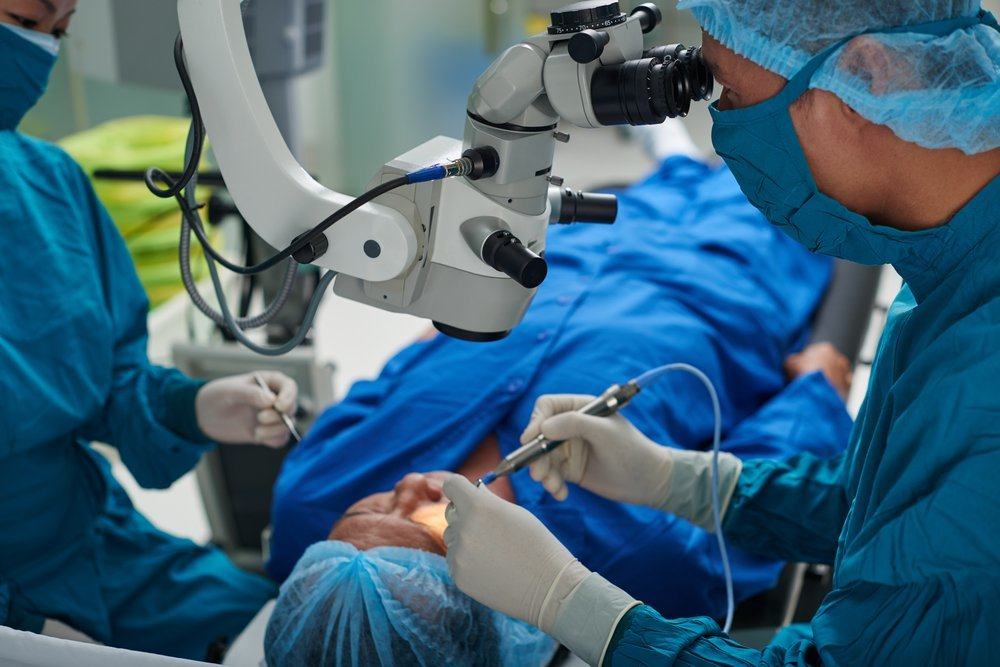Contents:
- Medical Video: Preparing for Your Eye Surgery
- What are the preparations before undergoing cataract surgery?
- What is the success rate of cataract surgery?
- What type of lens is given in cataract surgery?
- What is the procedure for cataract surgery?
Medical Video: Preparing for Your Eye Surgery
Cataracts are visual impairments that can occur to anyone, but generally occur in old age. Cataract vision disorders can be caused by several things, such as trauma to the eyes, chemical poisons, changes in the eyes due to the aging process, and congenital birth. The aim of doing cataract surgery is to improve vision by removing the foggy lens in the eye. When you are sure to do cataract surgery, here are the things you need to know.
What are the preparations before undergoing cataract surgery?
The following is what you need to ask or know before doing cataract surgery:
- A week or far before surgery, the doctor will do an ultrasound test to measure the size and shape of your eyes. This is done to determine the type of implant lens that is right for your eyes.
- You may also be asked to stop taking some medications that can increase the risk of bleeding during the surgical procedure. If you are taking the drug for prostate problems, tell your doctor, because some of these drugs can interfere with cataract surgery.
- Use eye drops to reduce the risk of infection. The doctor will also prescribe antibiotic eye drops to be used for one to two days before surgery.
- As with certain operations, you will also be asked to fast before surgery. Instructions given are usually not allowed to eat or drink for 12 hours before surgery.
- Don't forget you should wear comfortable clothes and carry sunglasses when going to the hospital for surgery. Don't use perfume, cream aftershave, or other fragrances. It doesn't matter if you want to use facial moisturizers, but avoid makeup and false eyelashes.
- Get ready for the healing phase. Usually, you can go home the same day after the surgery, but you are not allowed to drive your own vehicle. So, make sure you are accompanied and someone takes you home after the surgery. The doctor will look at your situation in advance, if necessary, he will limit activities such as bending and lifting for a week after surgery
What is the success rate of cataract surgery?
You might wonder whether cataract surgery can work well or not. You don't need to worry. The average cataract surgery has a success rate of around 85 to 92 percent in adults with some complications and a little discomfort. The risks posed are less likely to occur, because only about 5% experience complications that threaten their vision, or require additional surgery. Although the risk is low, cataract surgery still has the risk of partial vision loss. Increasing risk can also occur when you have certain eye diseases.
After surgery, you will need reading glasses, no matter what type of cataract surgery you are undergoing. Some people will need glasses for long-distance vision. Your vision will be retested after 6 months.
What type of lens is given in cataract surgery?
Every person undergoing cataract surgery will be given an artificial lens called an intraocular lens; lenses that can improve your vision by focusing light on the back of your eyes. These lenses are made of plastic, acrylic, and silicon. You might not feel the lens after surgery. In addition, the advantages of this lens are permanent and do not require maintenance. Some lenses will block ultraviolet light. The following are some of the types of lenses available:
- Monofocal fixed-focus - this lens has a single focusing power for long distance vision. When you will read, you will still need special glasses to read.
- Monofocal accommodating-focus - although the focus power is also single, this lens can respond to the movement of the eye muscles, and alternately focus on even distant objects near objects.
- Multifocal - this type of lens has a function similar to bifocal or progressive lenses. Different points on the lens have different focus strengths too, some for short, long and medium distances.
- Astigmatism correction (Toric) - This lens is usually intended for those of you who have cylindrical. Using this lens can help your vision.
What is the procedure for cataract surgery?
After you and your doctor have a discussion about which intraocular lens fits your needs. The lens will then be folded and put into an empty capsule where the natural lens should be. Eye surgeons will use the following method to get rid of cataracts:
- A procedure called phacoemulsificationthe eye surgeon will make a small incision into the lens substance where the cataract is formed. The surgeon will use a device that transmits ultrasound waves to break down the cataract, and pull the fragment out. The rear lens (capsule lens) is left intact so that it can accommodate artificial lenses. You may also get stitches, or you may not get stitches to cover a small incision in your eye cornea
- Another procedure is called extracapsular cataract extraction. In this procedure, the incision will be greater than the phacoemulsification procedure. The doctor will remove the front of the capsule and the foggy lens. However, the back of the capsule will remain as a place where the artificial lens is placed
READ ALSO:
- Is it true that LASIK procedures cause cataracts?
- Various Facts You Need to Know About LASIK Operations
- Different Types of Corrective Eye Surgery: Not Only LASIK












